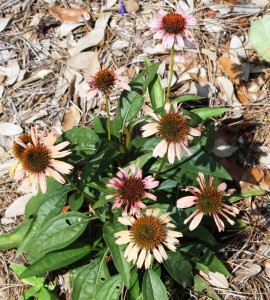 Although it seems like summer outside, especially with such warm weather the week before Thanksgiving, winter temperatures will be coming. Possibly sooner rather than later. Perennials that are meant to die to the ground each winter look ugly and decayed after the first frost. Faced with such unattractive plants, most gardeners are inclined to cut them to the ground right away. That action might be a mistake.
Although it seems like summer outside, especially with such warm weather the week before Thanksgiving, winter temperatures will be coming. Possibly sooner rather than later. Perennials that are meant to die to the ground each winter look ugly and decayed after the first frost. Faced with such unattractive plants, most gardeners are inclined to cut them to the ground right away. That action might be a mistake.
Many perennials, such as hibiscus species, hydrangea, salvia species, firebush (Hamelia patens), rudbeckia, echinacea, lantana and others still have a large amount of starch stored in their branches, even after the first frost. Although it is very tempting to remove these unattractive reminders of the beautiful spring gardening season, it is better to wait to allow the starch to translocate (move) down to the root system. The time that this takes varies by plant species, but can be as late as February.
To determine if there is “life” left in those burned and singed stems, just scratch off the top layer of the stem. If any nutrients remain in the stem, it will be green or yellow where the scratch was made. If it is brown and dead, it is safe to prune the perennial back.
If you can stand to wait, allow those unsightly stalks to remain until February. If they contain any plant nutrients this will give the plant some energy during the winter months. This is not possible in every situation, but following this practice will bring stronger flowering perennials next season!
- Woodland Pinkroot Adds Vibrant Color to Spring Landscapes - April 27, 2023
- Easy Care Roses for the Gulf South - April 20, 2023
- Herb Gardening: When Oregano is Flavorless - March 9, 2023
